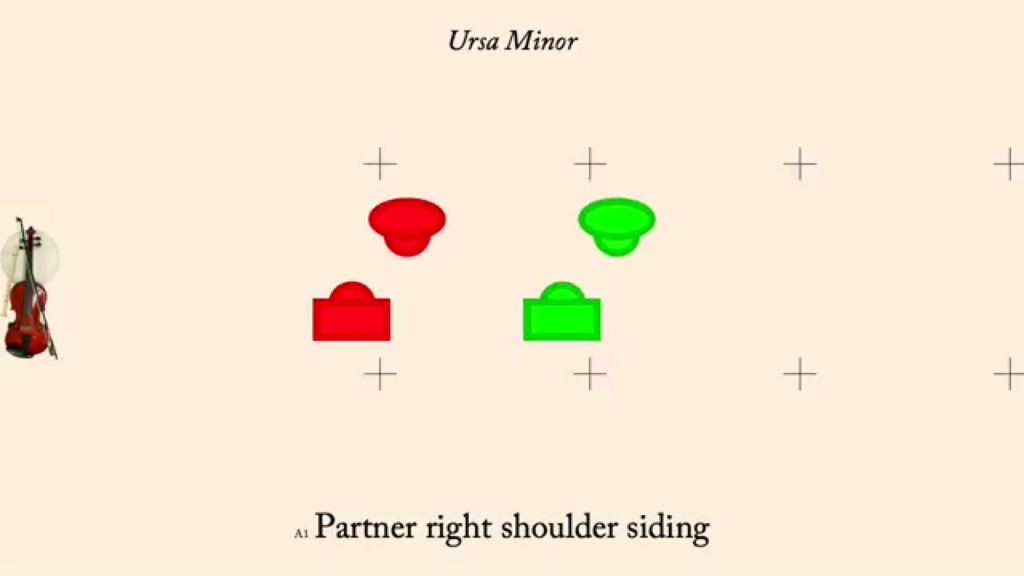
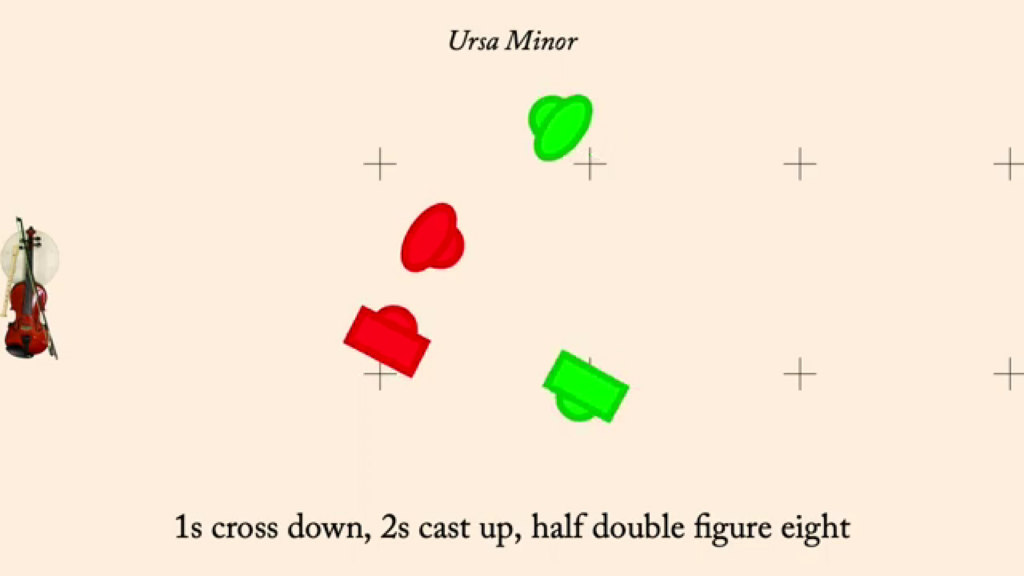
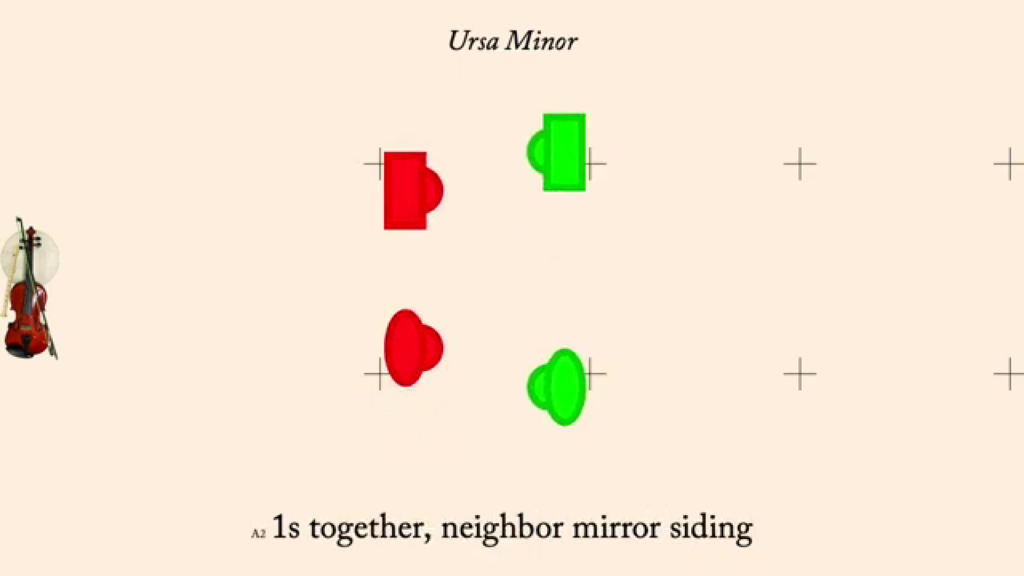
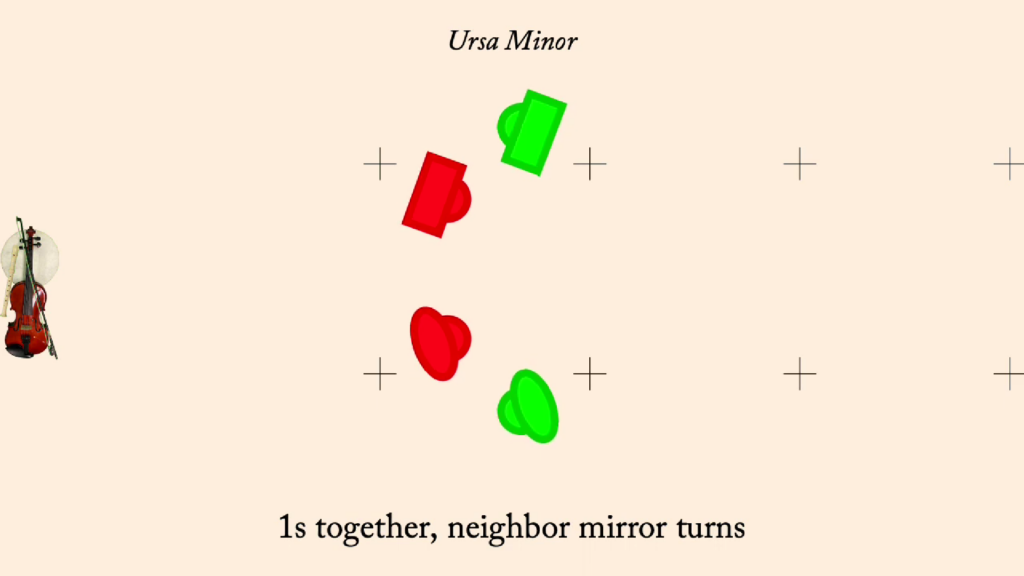
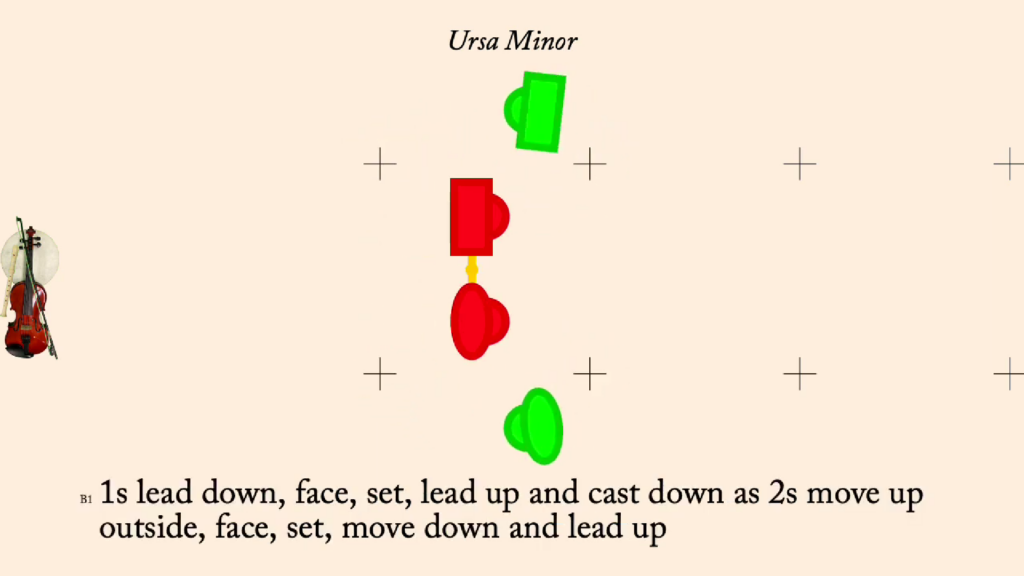
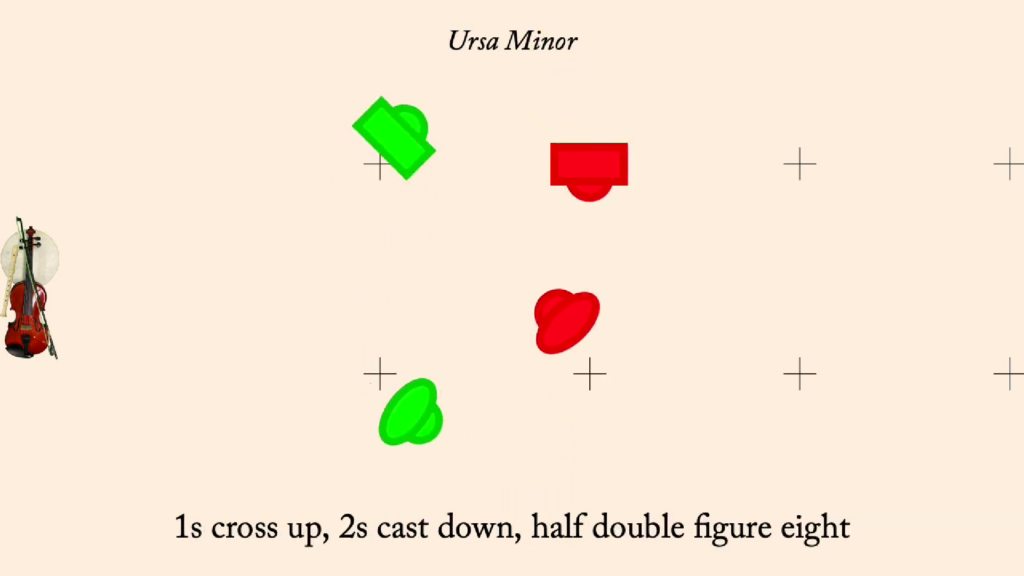
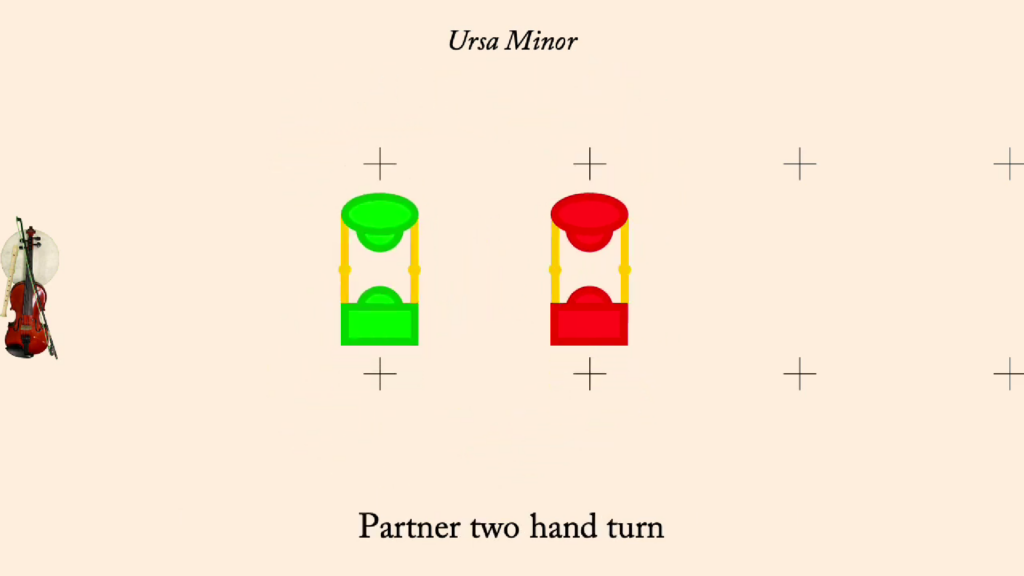

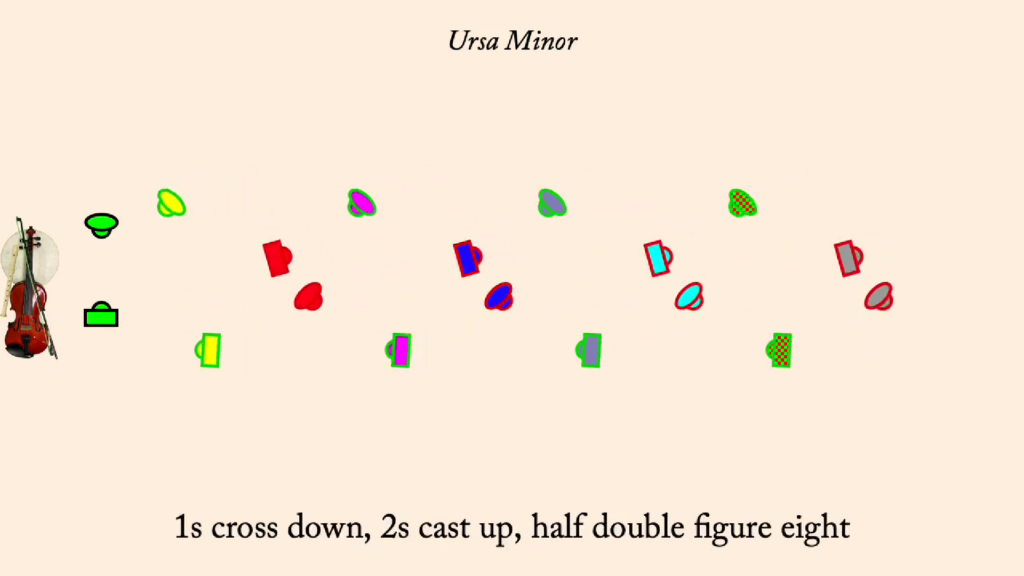
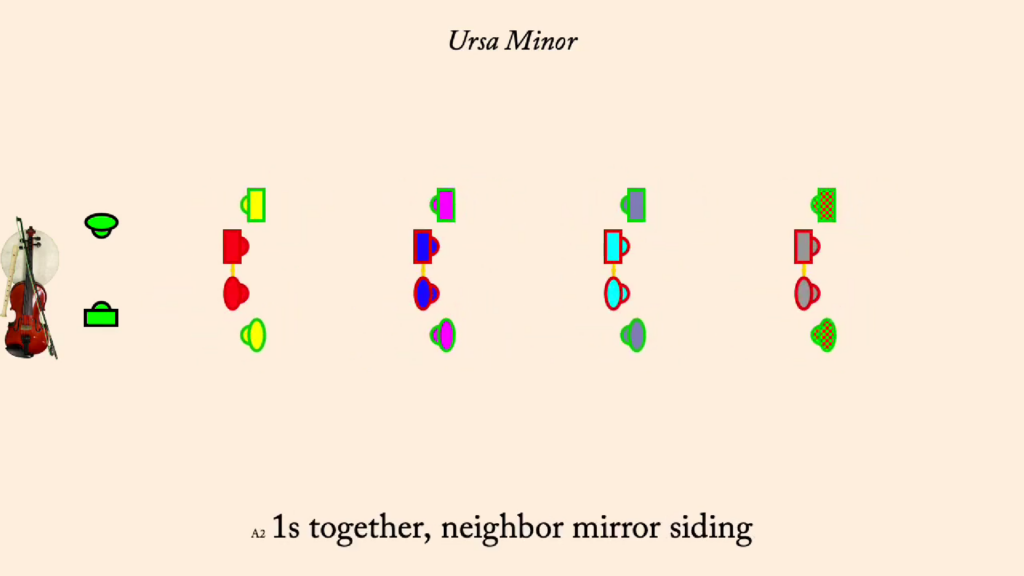
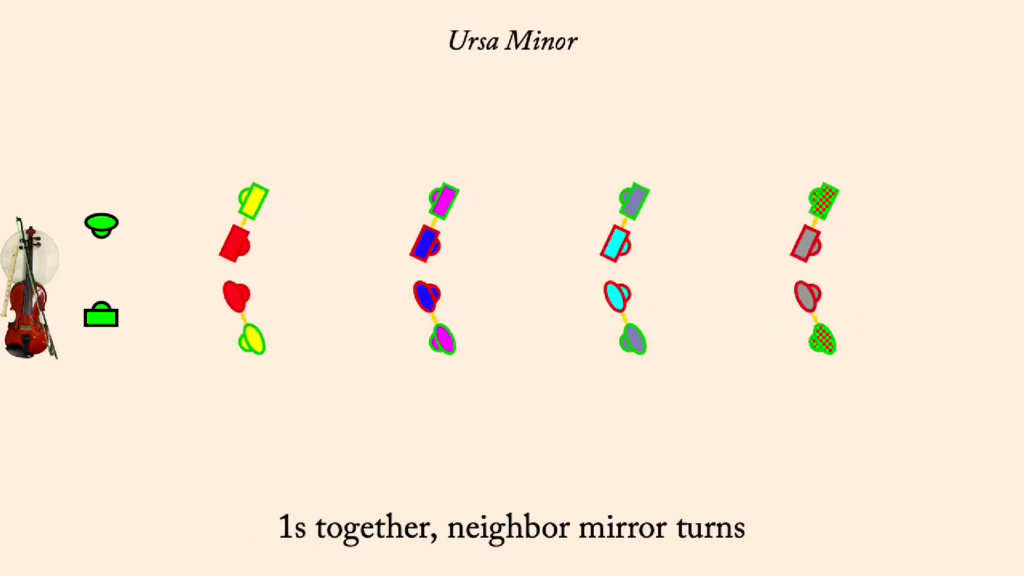
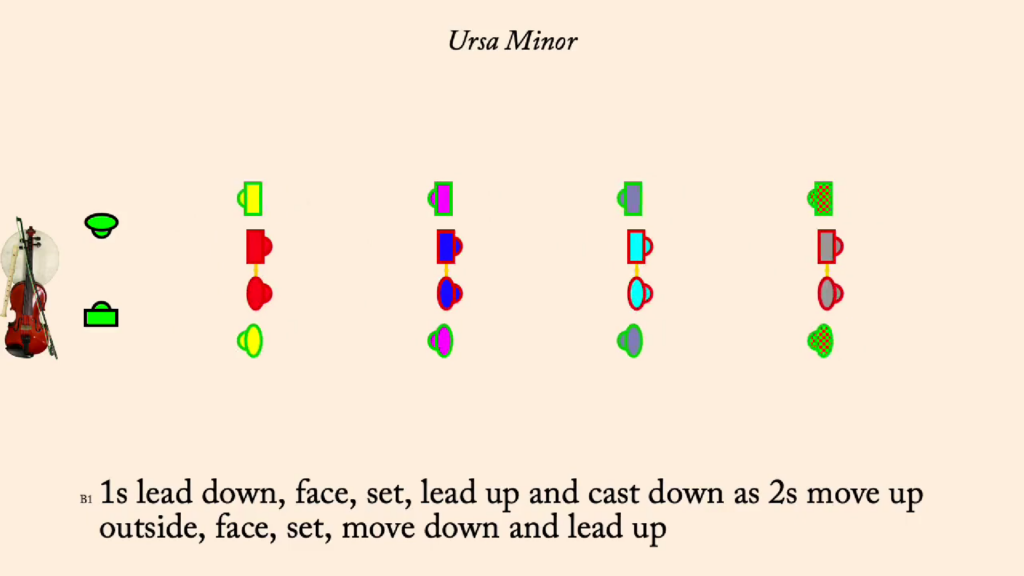
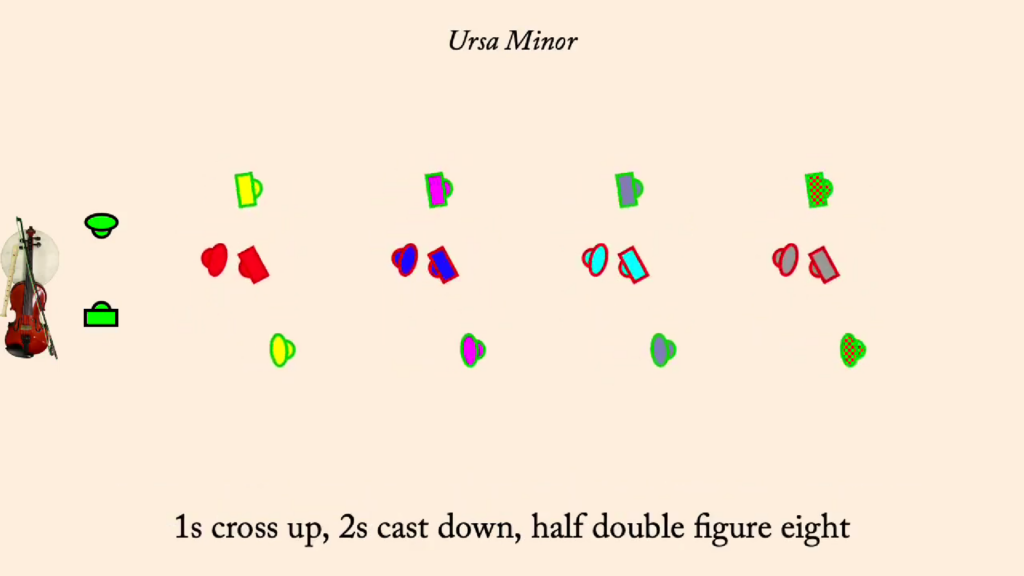
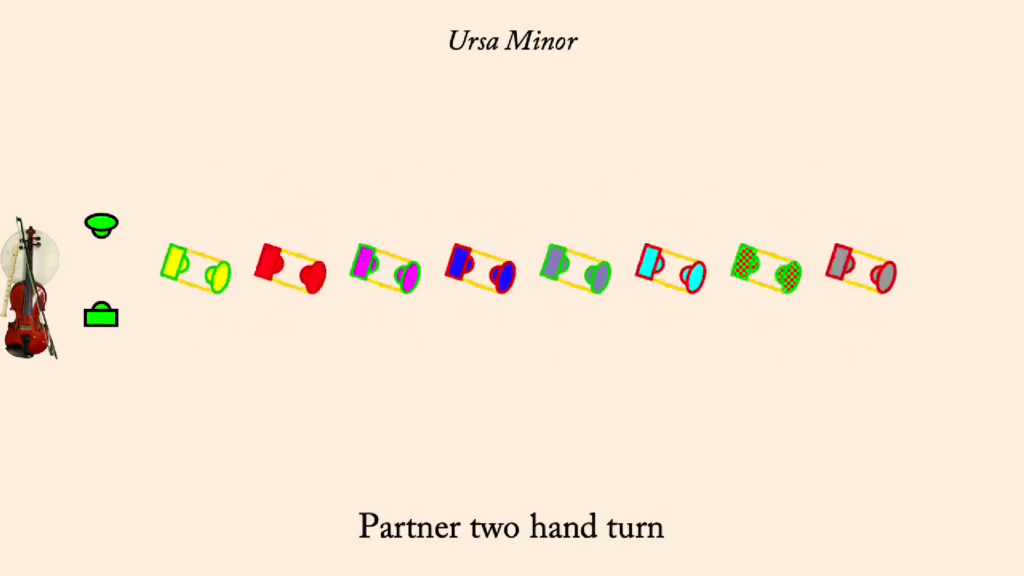
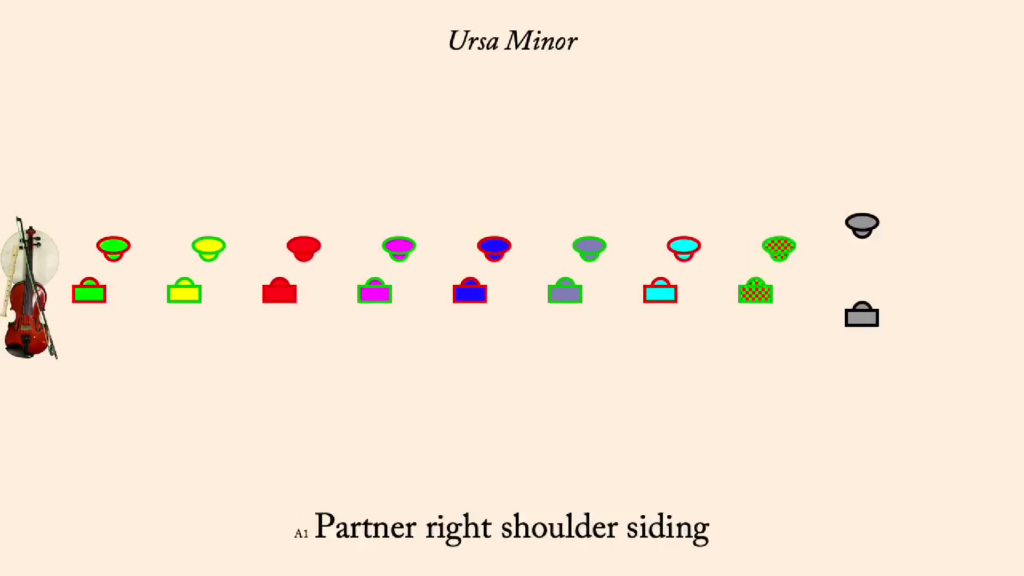
Cast

 A cast involves turning outside the set, traveling along the outside a certain number of places (usually 1) and then coming back into the set at a new position. Casts are usually up or down the set but can also be across.
A cast involves turning outside the set, traveling along the outside a certain number of places (usually 1) and then coming back into the set at a new position. Casts are usually up or down the set but can also be across.
Casts may be long or short. A long cast takes twice as long and involves the people casting coming in to the center to meet and touch hands before casting out to the sides. The short cast simply involves turning and going down the sides.
Styling: as you cast outside the set you have a good chance to catch the eye of your partner as s/he also casts.
Often there will be someone else in the spot that you are moving into, so while you are casting this other person must move out of the way.
In the example on the left the 1s cast down one place while the 2s lead up one place (to make room for them). In the example on the right the women will lead between the men and then cast back to their place (in this case the cast is across the set rather than up or down).
A short cast of one place takes 4 counts, while a long cast takes 8.
Half Figure Eight
 The half figure eight begins with the woman who crosses down between the couple below, loops around the man and comes back up to where her partner started. The man starts half a bar behind, crosses down, loops around the woman and comes back to where his partner started. (Note that the man has just as far to go in the same amount of music but starts later, so he must hurry a little once he has looped).
The half figure eight begins with the woman who crosses down between the couple below, loops around the man and comes back up to where her partner started. The man starts half a bar behind, crosses down, loops around the woman and comes back to where his partner started. (Note that the man has just as far to go in the same amount of music but starts later, so he must hurry a little once he has looped).
The half figure eight is a complicated way to cross from one side of the set to the other.
I said “crosses down”, but you can also cross up and go around the couple above, the pattern is just the mirror image. In some dances half figure eights happen across the set too. In very rare dances it is the man who starts the figure and the woman who waits.
There is, of course, a full figure eight, basically it repeats the half figure eight (except the second time through you start from the opposite side). This is a complicated way to stay in the same place.
A half figure eight takes 8 counts.
Lead
 When a couple leads (pronounced leeds not leds) they join hands and dance in the direction indicated. In the US English Dancers will usually join handy-hands (that is each will offer the hand closest to the other), but I was taught to join right hand in right hand.
When a couple leads (pronounced leeds not leds) they join hands and dance in the direction indicated. In the US English Dancers will usually join handy-hands (that is each will offer the hand closest to the other), but I was taught to join right hand in right hand.
In the example above the 1s lead down the set, turn and lead back up. If you join handy hands then when you turn you have to drop hands and rejoin (because the handy hand changes after the turn) but if you join right in right and turn toward one another you can retain the same hand clasp, which I think is smoother.
Styling: When doing a lead you are in a good position to gaze at your partner.
I believe that “lead”, when translated into French, became “promenade”.
The number of counts (steps) taken by a lead depends on how far the dancers travel during the lead.
Siding
 Sometimes simply called “Side”. You can side either to right or to left. Often you first side to the right and then side to the left. When doing “right shoulder siding” you walk toward the center of the set and slightly to your left, stopping in the middle so that your right shoulder is near your partner’s right shoulder. In “left shoulder siding” you do essentially the same except mirror reversed.
Sometimes simply called “Side”. You can side either to right or to left. Often you first side to the right and then side to the left. When doing “right shoulder siding” you walk toward the center of the set and slightly to your left, stopping in the middle so that your right shoulder is near your partner’s right shoulder. In “left shoulder siding” you do essentially the same except mirror reversed.
Styling: Take a moment to acknowledge your partner in the center.
The example shows first right shoulder siding then left shoulder siding, as you would find in a USA dance.
Each siding figure takes 8 counts, doing both takes 16.
Views: 60